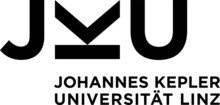03/28/2022
ESQ Faculty member Joachim Burgdörfer and his colleagues at TU Wien and collaborators have published their latest findings in Nature Communications
When computer chips work with ever shorter signals and time intervals, at some point they come up against physical limits. The quantum-mechanical processes that enable the generation of electric current in a semiconductor material take a certain amount of time. This puts a limit to the speed of signal generation and signal transmission.
TU Wien (Vienna), TU Graz and the Max Planck Institute of Quantum Optics in Garching have now been able to explore these limits: The speed can definitely not be increased beyond one petahertz (one million gigahertz), even if the material is excited in an optimal way with laser pulses. This result has now been published in the scientific journal "Nature Communications".
For more information see:
https://www.nature.com/articles/s41467-022-29252-1
Navigation
Contact
ESQ Office
Austrian Academy of Sciences (ÖAW)
Atena Zalbeik-Dormayer
Boltzmanngasse 5
1090 Vienna
office(at)esq-quantum.at






